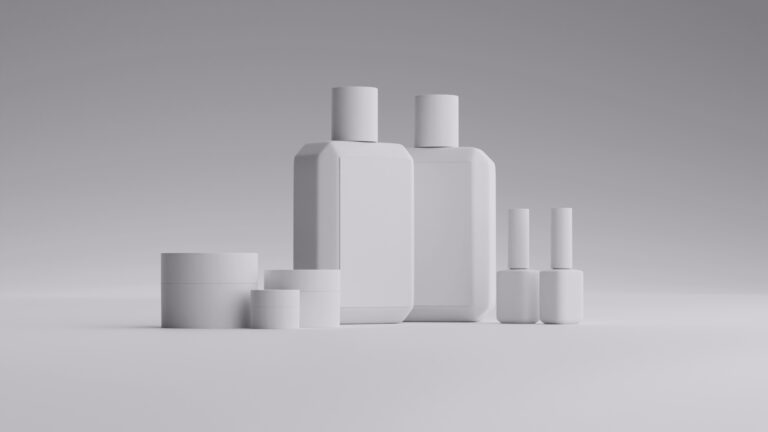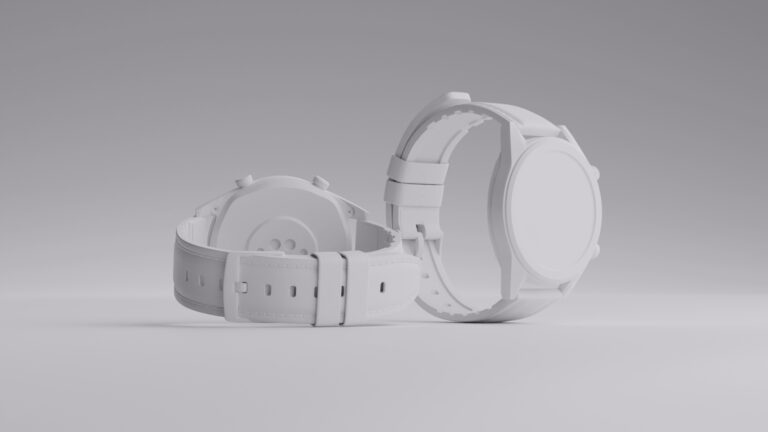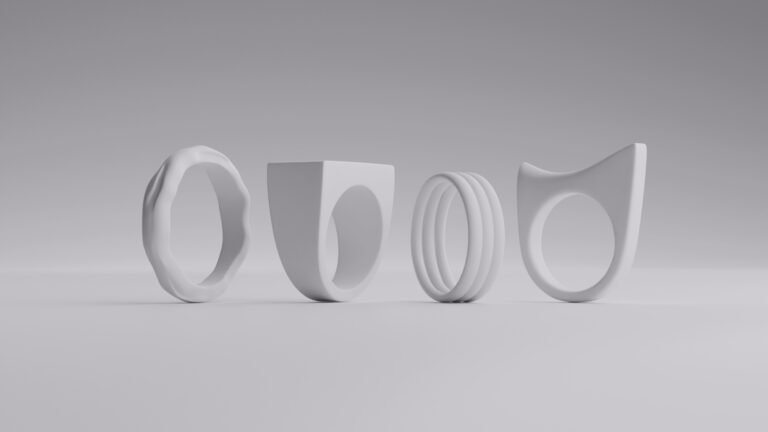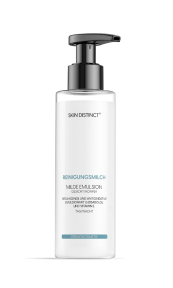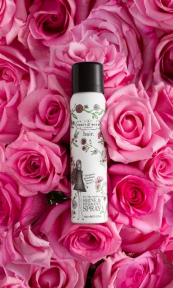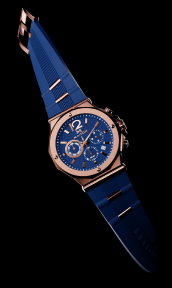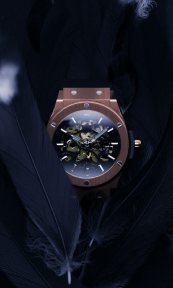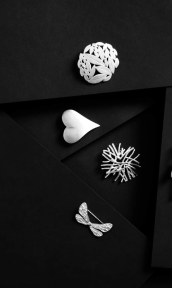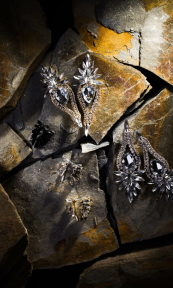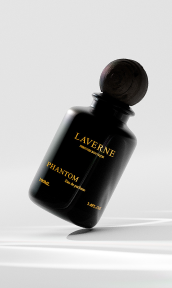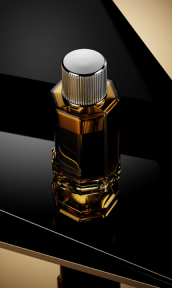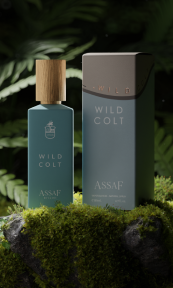Whether you are a pet owner looking to showcase your favorite products, a business aiming to sell pet supplies, or a photography enthusiast wanting to expand your portfolio, pet product photography is an essential aspect of promoting pet-related products. High-quality, engaging images can make a significant difference in capturing attention and driving sales.
So, to help you improve your pet product photography, we created this guide. It will provide comprehensive insights and practical tips to help you capture appealing and professional photographs. So, without further ado, let’s begin!
Understanding the Importance of Pet Product Photography

Nowadays, online shopping is increasingly prevalent thus visuals are crucial. A well-composed image can convey quality, trust, and appeal, making potential customers more likely to purchase. Here’s why pet product photography is vital:
- First Impressions: Quality photos create a strong first impression, making your product stand out in a crowded market.
- Customer Trust: Clear, detailed images help build trust by showcasing the product’s quality and functionality.
- Increased Sales: High-quality images can increase conversion rates by giving potential customers a realistic view of the product.
- Brand Image: Consistent, professional photography helps establish a strong brand identity and credibility.
Understanding the importance of pet product photography is essential for anyone looking to make a strong impact in the pet industry. Whether you’re a business aiming to increase sales, a pet owner showcasing beloved products, or a photographer building a diverse portfolio, high-quality images are key to success. They create powerful first impressions, build trust with your audience, and elevate your brand’s image. By recognizing the value of professional pet product photography, you position yourself to stand out in a competitive market, ultimately driving engagement and boosting conversions.
Essential Equipment for Pet Product Photography
To achieve professional-looking pet product photos, having the right equipment is crucial. Here’s what you’ll need:
- Camera: While a DSLR or mirrorless camera is ideal, many modern smartphones with advanced camera features can also deliver excellent results. Focus on cameras with good resolution, manual settings, and macro capabilities for close-up shots.
- Lenses: A macro lens is perfect for capturing detailed shots of small items, while a 50mm or 85mm lens with a wide aperture (f/1.8 or lower) can create beautiful, blurred backgrounds.
- Tripod: A stable tripod is essential for keeping your camera steady, particularly for close-ups or longer exposure shots.
- Lighting: Natural light is the best option, but if shooting indoors, invest in softbox lights or a ring light to avoid harsh shadows and create even lighting.
- Backgrounds: Use neutral or simple backgrounds that complement the product without distracting from it. White, gray, or light-colored backdrops work well for most products.
- Reflectors: Reflectors can help bounce light onto the product, reducing shadows and highlighting details.
- Editing Software: Post-processing is key for polishing your images. Adobe Lightroom and Photoshop are popular choices, but there are also many user-friendly apps for beginners.
The right equipment is crucial for capturing professional and appealing pet product photography. From selecting a high-quality camera and lenses to investing in proper lighting and sturdy tripods, each piece of gear plays a vital role in achieving the best possible results. By equipping yourself with the right tools, you ensure that your photos are sharp, well-lit, and visually captivating, setting the foundation for successful product presentations that can effectively attract and engage your audience
Preparing the Product and Setting the Scene

Now that you are familiar with the equipment, let’s get to work. Any good picture requires a good scene, therefore preparation is critical for a successful shoot. Here’s how to get started:
- Clean and Groom Products: Ensure that the products are clean, dust-free, and in perfect condition. For example, if you’re photographing a dog collar, make sure it’s free of dirt and pet hair.
- Styling the Scene: Consider the environment in which the product would naturally be used. For pet bowls, set them up with some pet food or water. For pet beds, use soft blankets or toys. The goal is to make the product look inviting and functional.
- Choosing the Right Background: Select a background that enhances the product’s appearance. For example, if you’re photographing an outdoor pet product, a natural outdoor setting would be ideal.
- Incorporate Props: Adding relevant props can make your photos more engaging. For instance, a pet collar might look more appealing when placed next to a leash or a pet toy.
Proper preparation and thoughtful scene setting are key to creating compelling pet product photographs. By ensuring your products are clean, styled, and paired with the right backgrounds and props, you enhance their appeal and showcase their functionality. Taking the time to carefully prepare and set the scene not only elevates the quality of your photos but also helps to tell a story that resonates with your audience, making the products more relatable and enticing. This attention to detail is what transforms a simple product shot into a professional and engaging visual experience.
Lighting Techniques for Pet Product Photography
Lighting is one of the most important elements in photography. Proper lighting can highlight the product’s features and make the colors pop. This is especially useful when it comes to pet products, as many owners will be highly attentive to even the tiniest details when it comes to the comfort of their beloved pet. So, you should pay attention to the following:
- Natural Light: If possible, shoot in natural light. A well-lit room with plenty of sunlight or an outdoor setting can create soft, flattering light. Early morning or late afternoon (the golden hour) provides the best natural lighting conditions.
- Artificial Lighting: When shooting indoors, use softbox lights or a ring light to create even lighting. Position the lights at a 45-degree angle to the product to minimize shadows.
- Light Diffusion: Use diffusers to soften harsh light. This can be achieved with professional diffusers or DIY options like white bedsheets or tracing paper.
- Reflectors: Place reflectors opposite the light source to bounce light onto the darker areas of the product. This helps create a balanced, well-lit image.
Mastering lighting techniques is essential for producing stunning pet product photography. Whether using natural light or artificial setups, the way you light your product can dramatically impact its appearance, highlighting details and enhancing colors. Soft, even lighting minimizes shadows and brings out the product’s best features, making it more attractive to potential buyers. By understanding and applying effective lighting strategies, you ensure that your pet products are presented in the most flattering and professional way possible, ultimately contributing to the success of your photography efforts.
Composition and Angles: Making Your Products Shine

Composition and angles are other important aspects of your images. These two can make a huge difference in how a product is perceived by your customers. So, try to focus on the following aspects:
- Rule of Thirds: Imagine a grid dividing your frame into nine equal parts. Position the product along these lines or at the intersections to create a balanced composition.
- Focus on Details: Highlight the unique features of the product by capturing close-up shots. For instance, focus on the stitching of a pet collar or the texture of a pet bed.
- Experiment with Angles: Shoot from different angles to find the most flattering perspective. Overhead shots work well for flat-lay images, while a low angle can make the product look more dynamic.
- Use Negative Space: Leave some space around the product to avoid a cluttered look and draw attention to the item.
- Consistency: Maintain consistency in composition and angles, especially if you’re shooting a series of products for a catalog or website.
Effective composition and the right angles are crucial for making your pet products truly shine in photographs. By applying the aforementioned techniques you can create visually striking images that capture the essence of your products. Thoughtful composition not only enhances the aesthetic appeal of your photos but also helps direct the viewer’s attention to the most important features.
Ultimately, mastering these elements ensures that your pet product photography stands out, engaging your audience and highlighting your products in the best possible light.
Working with Pets in Product Photography
Incorporating pets into product photography can bring a unique and engaging element to your images, but it also comes with its own set of challenges. Pets can be unpredictable, and their behavior might not always align with your creative vision.
However, with the right approach, you can capture authentic, heartwarming photos that resonate with pet owners and make your products more appealing. Here’s how to effectively work with pets in product photography:
Preparing for the Shoot
Preparation is key when working with pets. Start by ensuring that the environment is safe and comfortable for the animal. Remove any hazards and create a space where the pet can move freely and feel at ease. Familiarize the pet with the space before you begin shooting, allowing them to explore and relax. If possible, have the pet owner present to help the pet feel more secure and to assist with handling.
Patience and Flexibility
Patience is perhaps the most important quality you can bring to a pet photography session. Pets don’t always cooperate as expected, so be prepared for delays and be flexible with your plan. Allow the pet to take breaks when needed, and don’t rush the process. The more relaxed the environment, the more likely you are to capture natural and joyful expressions.
Using Treats and Toys
Treats and toys are invaluable tools for keeping a pet’s attention and encouraging them to interact with the product. Use treats to reward good behavior or to guide the pet into a particular position. Toys can be used to draw the pet’s focus toward the product or to create playful, dynamic shots. Squeaky toys or other noise-makers can also help capture the pet’s attention and get them to look directly at the camera.
Incorporating Movement
Including movement in your shots can add life and energy to your photos. Capture the pet playing with a toy, running, or interacting with the product naturally. Action shots are often more engaging than static poses and can better showcase the functionality of the product, whether it’s a toy, a piece of furniture, or an accessory.
Getting the Right Expressions
One of the most charming aspects of pet photography is capturing the unique expressions of animals. Whether it’s a playful glance, a curious tilt of the head, or a contented yawn, these moments can add personality and warmth to your images. Keep the camera ready to capture these spontaneous expressions, and don’t be afraid to take multiple shots to get the perfect one.
Safety and Comfort
The safety and comfort of the pet should always be your top priority. Avoid using products that could pose a risk to the animal or cause them discomfort. Ensure that any props or accessories used in the shoot are safe and appropriate for the pet. Pay attention to signs of stress, such as excessive panting, yawning, or avoiding eye contact, and adjust your approach accordingly.
Working with an Assistant
Having an assistant can make a significant difference when photographing pets. An assistant can help manage the pet, keep them focused, and reposition them as needed. This allows you to concentrate on capturing the best angles and compositions without constantly having to chase after the pet or manage distractions. An assistant can also help with holding reflectors or adjusting lighting on the fly, making the process more efficient.
Creating a Connection
Finally, building a connection with the pet is crucial. Take the time to interact with the pet before and during the shoot. Speak in a calm, soothing tone, and offer treats or gentle pets to build trust. The more comfortable the pet feels with you, the more likely they are to relax and display their natural behavior, resulting in more authentic and engaging photographs.
Working with pets in product photography requires a blend of patience, creativity, and compassion. By preparing thoroughly, using the right tools, and focusing on the pet’s comfort and safety, you can capture stunning images that highlight both the product and the pet’s personality. These authentic, emotionally resonant photos can help make your products more relatable and appealing to potential customers, ultimately enhancing the effectiveness of your photography efforts.
Post-Processing: Enhancing Your Images

Post-processing is a crucial step in pet product photography, where you refine and polish your images to make them truly stand out. Even if you’ve captured a great shot, editing can elevate the photo to a professional level, ensuring it meets the highest standards of quality. Here’s how to approach post-processing to enhance your pet product images:
Color Correction and White Balance
Color correction is one of the first steps in post-processing. Start by adjusting the white balance to ensure that the colors in your photo are accurate and true to life. This is particularly important in pet product photography, where the correct color representation of the product is crucial for both branding and customer satisfaction.
For example, if you’re photographing a vibrant pet toy, you want the colors to be as vivid and accurate as possible. Most editing software, such as Adobe Lightroom or Photoshop, provides sliders or auto-correction tools to help with this.
Adjusting Exposure and Contrast
Ensuring the right exposure and contrast levels can significantly improve the overall look of your image. If your photo is underexposed (too dark) or overexposed (too bright), use the exposure slider to bring it to the correct level.
Contrast adjustments can help make your product stand out more by deepening shadows and brightening highlights, adding depth and dimension to the image. Be careful not to overdo it, as too much contrast can make the image look unnatural.
Sharpening and Detail Enhancement
Sharpening is vital for highlighting the fine details of your product, especially in close-up shots. This process enhances the edges within your photo, making the texture and features of the product more defined and crisp. In pet product photography, where details like stitching on a collar or the texture of a pet bed are important, sharpening can help these elements stand out. Use the sharpening tools available in your editing software, but apply them subtly to avoid introducing noise or an overly harsh appearance.
Cropping and Composition Refinement
Cropping is not just about trimming away unwanted parts of the image; it’s also a tool to improve composition and focus the viewer’s attention on the product. After taking the shot, you might find that the framing needs adjustment to better adhere to composition rules like the rule of thirds, or simply to remove distracting elements. Cropping can also help in creating uniformity across a series of product images, ensuring they all have a consistent look and feel.
Background Cleaning and Removal
Sometimes, even with a carefully controlled environment, the background may need some cleaning up. Stray hairs, dust particles, or other small imperfections can be removed during post-processing.
For a more polished look, especially in product listings or catalogs, consider removing or replacing the background entirely. Tools like the pen tool in Photoshop allow for precise background removal, which can then be replaced with a solid color or a more suitable backdrop.
Adding Vignettes and Effects
Vignettes are a subtle way to draw the viewer’s attention to the product by darkening the edges of the image. This effect can help center the product within the frame and make it the focal point.
Other effects, such as adding a slight glow or adjusting the overall tone, can be used to create a specific mood that complements the product. For example, a warm tone might be used for cozy pet beds, while a cooler tone could suit modern pet accessories.
Noise Reduction
Noise, which appears as graininess in your images, can be a problem, especially in photos taken in low-light conditions. Post-processing software often includes noise-reduction tools that can help smooth out these imperfections. However, use these tools sparingly, as too much noise reduction can make the image look overly soft and lose detail. Aim for a balance where the image looks clean without sacrificing sharpness.
Consistent Editing Style
Maintaining a consistent editing style is crucial, especially if you’re photographing a range of products for a brand or website. Consistency in lighting, color tones, and overall presentation ensures that your product images look cohesive and professional when viewed together.
Develop a style guide for your edits, including specific settings for exposure, contrast, and color correction that can be applied across all images in a series. This not only speeds up the editing process but also helps build a recognizable brand identity.
Final Checks and Exporting
Before finalizing your images, do a thorough check for any overlooked details. Zoom in to inspect the image at 100% to ensure there are no imperfections. Once you’re satisfied with the edits, it’s time to export the images. Choose the appropriate file format and resolution based on the intended use—high resolution for print, and optimized file sizes for web use to ensure fast loading times without sacrificing quality.
Post-processing is an essential step that allows you to refine your pet product images, enhancing their quality and appeal. By carefully adjusting color, exposure, and composition, as well as applying sharpening, noise reduction, and other effects, you can transform a good photo into a great one.
Consistency in your editing style further ensures that your images contribute to a cohesive and professional brand presentation, ultimately making your products more attractive to potential customers. With attention to detail and thoughtful application of these techniques, your pet product photography can achieve a polished, professional look that stands out in the marketplace.
Common Mistakes to Avoid

Even with careful planning and execution, certain mistakes can easily undermine the quality of your pet product photography. Being aware of these common pitfalls will help you avoid them and produce professional, compelling images that showcase your products in the best possible light. Here are some of the most common mistakes and how to avoid them:
Overexposure or Underexposure
One of the most frequent errors in photography is incorrect exposure, where the image is either too bright (overexposed) or too dark (underexposed). Overexposure can wash out colors and lose important details, especially in bright areas of the image, while underexposure can result in dark, murky images where product details are lost in the shadows.
How to Avoid:
- Use Exposure Compensation: Most cameras allow you to adjust the exposure. Take test shots and use the exposure compensation feature to fine-tune the brightness.
- Check the Histogram: Use your camera’s histogram to ensure that the image has a balanced exposure. The histogram should ideally show a distribution of tones from shadows to highlights without peaking at either end.
- Shoot in RAW: Shooting in RAW format gives you more flexibility to correct exposure issues in post-processing without losing image quality.
Cluttered or Distracting Backgrounds
A cluttered or busy background can detract from the product and confuse the viewer’s focus. This is particularly problematic in product photography, where the goal is to highlight the product clearly and make it the focal point of the image.
How to Avoid:
- Use Simple Backgrounds: Choose plain, neutral backgrounds that won’t compete with the product. Solid colors like white, gray, or light pastels are often ideal.
- Blur the Background: If shooting with a shallow depth of field (using a wide aperture like f/2.8 or lower), the background will naturally blur, helping to keep the focus on the product.
- Declutter the Scene: Remove any unnecessary objects from the scene. Every element in the frame should serve a purpose and complement the product.
Ignoring Small Details
Small details can make or break a product photo. Overlooking things like dust, fingerprints, pet hair, or smudges can make your product look unprofessional and unappealing. These details are often amplified in high-resolution images, so it’s crucial to address them before shooting.
How to Avoid:
- Thoroughly Clean the Product: Before shooting, inspect and clean the product carefully. Use a microfiber cloth to remove dust and fingerprints.
- Use a Lint Roller: For fabric products or soft goods, use a lint roller to remove pet hair or dust.
- Check the Scene: After setting up the shot, take a moment to scan the entire frame for any distracting elements or imperfections and address them before you start shooting.
Poor Lighting Setup
Lighting is one of the most critical aspects of photography, and poor lighting can result in dull, flat, or shadowy images that fail to capture the product’s true appeal. Common lighting mistakes include using harsh, direct light that creates unflattering shadows, or relying solely on overhead lights that can wash out the product.
How to Avoid:
- Use Soft Lighting: Soft, diffused lighting is ideal for product photography. Use softboxes, ring lights, or natural light from a window filtered through a diffuser to create even, flattering light.
- Avoid Direct Flash: Direct camera flashes can create harsh shadows and reflections. Instead, opt for external lighting sources that can be positioned and diffused as needed.
- Experiment with Angles: Adjust the position of your lights to see how they affect the product. Side lighting can add depth, while front lighting ensures even illumination. Always aim to minimize harsh shadows and reflections.
Inconsistent Branding
Inconsistent visual branding can confuse your audience and weaken your brand identity. If your product photos vary significantly in style, lighting, color tone, or composition, it can make your brand appear disjointed and less professional.
How to Avoid:
- Develop a Style Guide: Create a visual style guide that outlines specific parameters for your product photography, including lighting setups, color schemes, angles, and composition techniques. Stick to these guidelines for every shoot.
- Batch Edit for Consistency: When editing photos, apply the same adjustments across all images in a series to ensure consistency in exposure, color, and tone.
- Use the Same Backgrounds: If possible, use the same or similar backgrounds for all product shots to create a cohesive look, especially for product listings or catalogs.
Overediting
While post-processing is essential for polishing your images, overediting can easily ruin them. Common signs of overediting include overly saturated colors, unnatural-looking skin tones in pets, excessive sharpening, or artificial-looking backgrounds. Overediting can make your photos look fake and off-putting to potential customers.
How to Avoid:
- Keep Edits Subtle: Aim for a natural look when editing. Make adjustments in small increments and avoid pushing settings to extremes.
- Focus on Realism: Ensure that the final image looks realistic, especially when it comes to colors and textures. Avoid making changes that alter the product’s appearance in a way that could mislead customers.
- Regularly Compare to the Original: As you edit, periodically compare the edited image with the original to ensure you’re enhancing the photo without losing the original’s integrity.
Neglecting to Test and Review
Failing to thoroughly test and review your images before finalizing them can lead to mistakes being overlooked, such as incorrect focus, unintended objects in the frame, or improper color balance. This can result in time-consuming re-shoots or subpar images being published.
How to Avoid:
- Conduct Test Shots: Before starting the shoot, take test shots to check lighting, focus, and composition. Review these on a larger screen to ensure everything is set up correctly.
- Review Images on a Computer: After the shoot, transfer the images to a computer and review them at full size. This allows you to catch any issues that might not be visible on the camera’s small screen.
- Get a Second Opinion: If possible, have someone else review the photos. A fresh pair of eyes might catch mistakes or areas for improvement that you missed.
Avoiding these common mistakes in pet product photography can significantly enhance the quality of your images, making them more professional, appealing, and effective in showcasing your products. By paying attention to details, ensuring proper lighting, maintaining consistency in branding, and being cautious during post-processing, you can create high-quality photos that truly highlight your products and resonate with your audience. Taking the time to avoid these pitfalls ensures that your images not only meet but exceed the expectations of your viewers, contributing to the overall success of your photography efforts.
Extra Tips for Shooting Specific Pet Products
Different pet products require unique approaches. Here are some specific tips:
- Pet Collars and Leashes: Focus on the texture, color, and any unique features like engravings or patterns. Showcase how the product looks when worn by a pet.
- Pet Beds and Furniture: Highlight the comfort and design. Use props like blankets or toys, and consider including a pet to demonstrate scale and use.
- Pet Toys: Capture the toy in action, being played with by a pet. Highlight the material and durability.
- Pet Food and Treats: Showcase the packaging as well as the product itself. Consider lifestyle shots with pets enjoying the food or treats.
- Grooming Products: Highlight the features, such as bristles on a brush or the texture of a shampoo. Include before-and-after shots if applicable.
Shooting specific pet products requires tailored approaches to capture their unique features and appeal effectively. Whether you’re photographing pet toys, accessories, grooming products, or pet furniture, understanding the nuances of each type of product ensures that you highlight their best attributes.
By applying specialized techniques and focusing on details specific to each product category, you create images that are not only visually striking but also informative and engaging for potential customers. These targeted strategies enhance the overall presentation of your products, making them more attractive and compelling in a competitive market.
Wrapping up
Pet product photography is a powerful tool for showcasing your products in the best light, whether you’re a business owner, pet lover, or photographer. By understanding the importance of high-quality images, investing in the right equipment, and applying the techniques outlined in this guide, you can create stunning, professional photos that capture the essence of your pet products and appeal to your target audience.
FAQ
What type of camera is best for pet product photography?
A DSLR or mirrorless camera with good resolution and manual settings is ideal for pet product photography. However, modern smartphones with advanced camera features can also produce high-quality images, especially if they have manual control and macro capabilities.
How can I ensure that my pet product images look professional?
To achieve professional-looking images, invest in essential equipment like a good camera, tripod, and proper lighting. Pay attention to composition, use neutral backgrounds, and apply effective post-processing techniques to enhance the quality of your photos.
What are some tips for photographing pet products with pets in the shot?
When photographing products with pets, ensure the environment is safe and comfortable for the animal. Use treats and toys to direct their attention, be patient and flexible, and focus on capturing natural expressions and movements.
How can I improve the lighting in my pet product photos?
Utilize natural light whenever possible, shooting during the golden hour for the best conditions. For indoor shoots, use softbox lights or a ring light to create even illumination. Employ diffusers to soften harsh light and reflectors to fill in shadows.
What background works best for pet product photography?
Simple, neutral backgrounds such as white, gray, or light pastels are generally best for pet product photography. They help keep the focus on the product without distracting elements.
How important is post-processing in pet product photography?
Post-processing is crucial for refining your images. It allows you to correct color, adjust exposure, sharpen details, and remove distractions, ensuring that your photos look polished and professional.
What common mistakes should I avoid in pet product photography?
Avoid common mistakes such as overexposure or underexposure, cluttered or distracting backgrounds, ignoring small details, poor lighting, inconsistent branding, overediting, and neglecting to review images thoroughly. By addressing these issues, you can significantly improve the quality of your photos.





